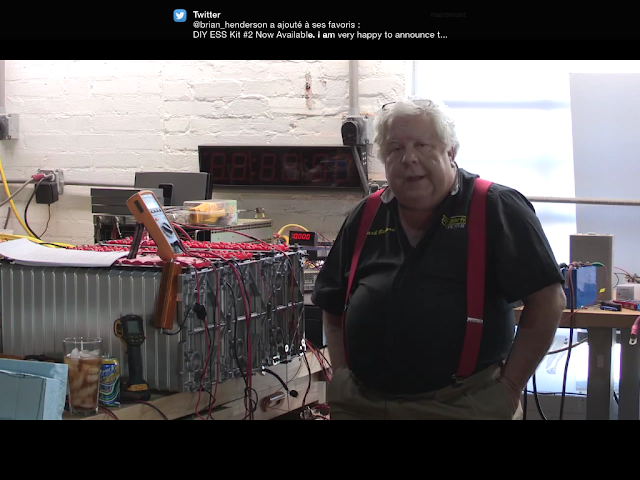
To many of us old timers, the battery storage industry looks a lot like the solar industry did ten years ago. Energy storage on the grid depends on future battery cost reductions, requires sophisticated management electronics, tricky packaging, favorable government policies, coordination with utility rates and appropriate financing. Not surprisingly, we're seeing successful solar entrepreneurs from the last decade applying their finely-honed skills and tactics to build new energy storage businesses.
The synergies between solar and battery storage are obvious, but problems still exist in getting the economics to pencil out for customers. As in the solar industry, clever system designs and financing strategies can go a long way to improve customer economics and generate real sales. Although we'd like to see a solar array on every residential roof and two battery stacks in every garage, what is more likely to happen is that commercial customers will be the early adopters of combined solar and energy storage systems.
Tom Leyden, CEO of Solar Grid Storage, is building a business at the nexus of solar and battery storage. They have developed an elegantly packaged combination of battery storage, inverters and rooftop solar. Just as importantly, they offer flexible financing packages that effectively combine storage and solar as a service — with the economic benefits accruing both from grid support services as well as customer peak shaving and backup power. Please join me on this week's Energy Show on Renewable Energy World as Tom Leyden explains the current opportunities and customer demand for combined solar and grid storage systems.
Find more episodes of The Energy Show here.
About The Energy Show
As energy costs consume more and more of our hard-earned dollars, we as consumers really start to pay attention. But we don't have to resign ourselves to $5/gallon gas prices, $200/month electric bills and $500 heating bills. There are literally hundreds of products, tricks and techniques that we can use to dramatically reduce these costs — very affordably.
The Energy Show on Renewable Energy World is a weekly 20-minute podcast that provides tips and advice to reduce your home and business energy consumption. Every week we'll cover topics that will help cut your energy bill, explain new products and technologies in plain English, and cut through the hype so that you can make smart and cost-effective energy choices.
About Your Host
Barry Cinnamon is a long-time advocate of renewable energy and is a widely recognized solar power expert. In 2001 he founded Akeena Solar — which grew to become the largest national residential solar installer by the middle of the last decade with over 10,000 rooftop customers coast to coast. He partnered with Westinghouse to create Westinghouse Solar in 2010, and sold the company in 2012.
His pioneering work on reducing costs of rooftop solar power systems include Andalay, the first solar panel with integrated racking, grounding and wiring; the first UL listed AC solar panel; and the first fully “plug and play” AC solar panel. His current efforts are focused on reducing the soft costs for solar power systems, which cause system prices in the U.S. to be double those of Germany.
Although Barry may be known for his outspoken work in the solar industry, he has hands-on experience with a wide range of energy saving technologies. He's been doing residential energy audits since the punch card days, developed one of the first ground-source heat pumps in the early ‘80s, and always abides by the Laws of Thermodynamics.
Source: Renewable Energy World
His pioneering work on reducing costs of rooftop solar power systems include Andalay, the first solar panel with integrated racking, grounding and wiring; the first UL listed AC solar panel; and the first fully “plug and play” AC solar panel. His current efforts are focused on reducing the soft costs for solar power systems, which cause system prices in the U.S. to be double those of Germany.
Although Barry may be known for his outspoken work in the solar industry, he has hands-on experience with a wide range of energy saving technologies. He's been doing residential energy audits since the punch card days, developed one of the first ground-source heat pumps in the early ‘80s, and always abides by the Laws of Thermodynamics.
Source: Renewable Energy World












































